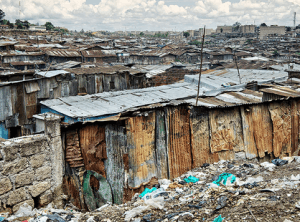Sub-Saharan Africa has highest percentage of slum dwellers in urban areas
 Sub-Saharan Africa has the highest percentage of urban dwellers who live in a slum – 61.7 per cent, according to the International Organization for Migration’s (IOM’s) 2015 World Migration Report.
Sub-Saharan Africa has the highest percentage of urban dwellers who live in a slum – 61.7 per cent, according to the International Organization for Migration’s (IOM’s) 2015 World Migration Report.
The percentage is unrivalled by those of other regions of the world that have slums: South Asia (35 per cent), South East Asia (31 per cent), East Asia (28 per cent), West Asia (25 per cent), Latin America and Oceania (24 per cent) and North Africa (13 per cent).
The report attributes the situation partly to the limited supply of affordable housing in Africa and the other regions, Latin America and Asia.
“Informal settlements, squatting and slums are in part a response to the lack of low-income public housing or subsidies and reflect weak urban planning and governance both at the local and national levels”, it says.
Accordingly, the report adds that the relatively fewer slums in North Africa are “largely attributed to better urban development strategies, including investment in infrastructure and the upgrading of urban settlements.”
The report also says that Africa’s urban population has been growing at a “historically unprecedented” rate in the past decades – the number of African cities with more than a million people, had risen to 33 in 2010, from just four in 1970 (Cape Town, Johannesburg, Kinshasa and Lagos) and only one in 1960 (Johannesburg).
Although it estimates that three million people around the world are moving to cities every week, fertility and general population growth are considered the main drivers of urban population growth in Africa, and migration to urban areas accounts for about only a third of Africa’s urban population growth.
While collection of data and information are relevant to urban planning, the report says only about 12 African countries have conducted a census during the last ten years.
The IOM says an estimated 66 million people migrate to urban areas each year, in the low and middle-income countries of Africa and Asia, and their cities are now expected to hold about 90 per cent of the world’s population growth over the next decades.
By Emmanuel Odonkor
